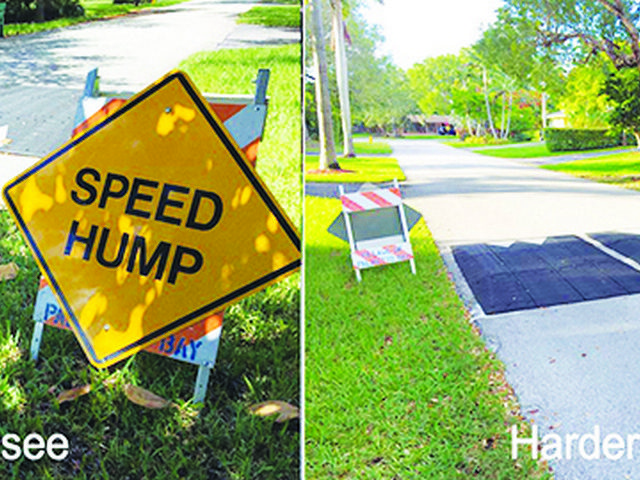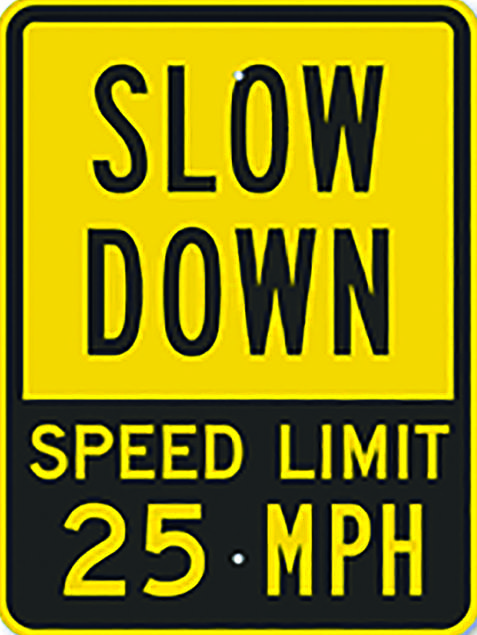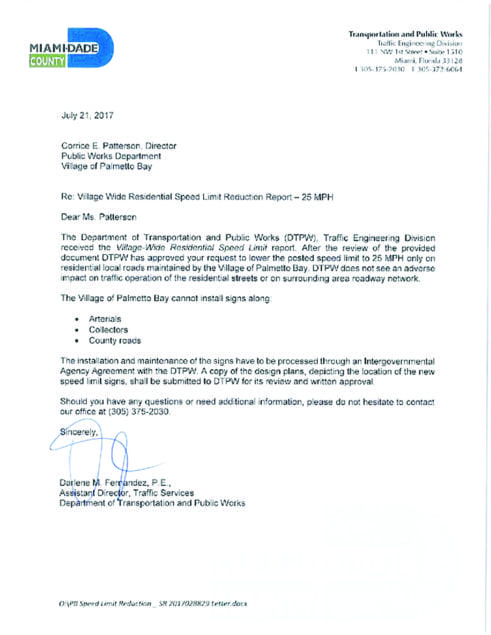Traffic in South Florida is bad and getting worse. One of the hot spots making people rage behind the wheel is Palmetto Bay. On many occasions, I have seen people honk, drive over sidewalks and grass to make turns and race over solid lines into oncoming traffic to save a few seconds. Not good.
As a real estate agent who knocks on many doors and speaks to tons of people in Pinecrest and Palmetto Bay, I can tell you the #1 reason people are thinking of moving is to escape traffic. This is more than just a shame, it’s a growing economic problem worth solving.
Recently, Palmetto Bay has tried to address the rising traffic frustrations of its residents by installing speed humps. Tons and tons of speed humps. Despite the fact that the Village held many workshops and open meetings to get input from its citizens and a few paid studies, the speed humps have done little to improve things.
In preparation for this article, I invited many Councilmembers and key staff to comment. None did. I also spoke to lots of people who both live and drive through Palmetto Bay. The rest of this article is my opinion, and it is supported by either the feedback I received or, frankly, the complete silence I heard from the Village Councilmembers. They know this is a controversial political ticking time bomb. I’ve opted to leave all the names out because this is not about politics, it’s about having our local government THINK instead of react.
First, let’s explore speed humps. They are called such because they temporarily slow vehicles down. They do not divert traffic, nor do they deter drivers from using a particular road. Yet, at two Neighborhood Watch meetings, I actually heard Councilmembers and staff say to their constituents they would use speed humps in an attempt to change traffic flow. What?!
Of course, the Village now seems to have these road pimples on nearly every single side street, well beyond where speeding is the primary concern. Once installed, the end result is drivers constantly using brakes and then gas while their commute times and anger climb ever higher.
I won’t go into the installations other than to say, the signage makes the speed humps hard or impossible to see, day or night. Several residents have reported car damage because they never saw the speed hump.
Several Councilmembers blame traffic on our smaller streets on apps like Google Maps and Waze. This is preposterous. Those apps are not the cause. They are actually a partial solution, as they load-balance traffic by dynamically routing people around congestion.
As a result of this continued frustration, the Council then looked for another Band-Aid to quiet their constituents and took up the charge to lower speed limits in Palmetto Bay.
Here is where I really must protest. Our roads were originally designed by well-educated professional engineers whose careers are designing and planning roads. They set up primary, secondary and tertiary roads with sophisticated planning and analysis such that speeds and traffic flow could be maximized together. This was a result of years of study and experience. So, to see the Village government seek to arbitrarily lower speed limits and look to dismantle this, I must call BS. This is nothing more than political theater.
On May 1, the Village forwarded (after two deferments) the idea of lowering Village road speeds to 20 mph. The resolution sought Miami-Dade County permission to do so and earmarked $50,000 for another traffic study to support it. On July 21, an approval letter for 25 mph “only on residential local roads maintained by the Village” came back essentially saying do what you want to your own roads, but all county roads will remain the same. In my mind, this is tantamount to the county distancing themselves and saying if you want some rope for your noose, you are welcome to it.
It’s time to listen to the ‘adults’ at the table and ignore the whining ‘kids.’ The residents cannot drive a reactive council. The approach must be planned and holistic. Take a step back. Our main (and only) problem is that USeless-1 is over capacity. Residential growth to the south has overwhelmed it and areas of Palmetto Bay and Pinecrest are suffering.
The solution is to get primary traffic (mostly work commuters) back to primary roadways and out of bedroom communities. US-1 must be made more efficient and we must also bolster public transportation. Residents need to demand our villages work together, hire professionals and request county assistance to return traffic to the correct arteries.
I’m no expert, but it is easy to see our government failing us, while trying to quell and coddle…and frankly keep us off their backs. We are not alone in this traffic quandary. Many other American cities and towns have addressed similar traffic flow issues. We should look at their solutions and not reinvent the wheel.
One of the things I find interesting is how New York and San Francisco (among many other areas) have utilized roadway zippers to create reversible lanes. This allows extra lanes to be dynamically created based on morning and evening commutes. I imagine this, along with real-time intelligent traffic light timings, to vastly improve US-1 capacity. Check out how San Diego is testing a zipper implementation on I-15: youtu.be/dl0Q2bDnBUc.
Stay tuned. Palmetto Bay has yet to start implementation. Get involved in the discussion so that intelligence wins out over reaction. And one thing I’ll tell you is I CAN’T DRIVE 25!
Real Estate Update
As of July 30th, the Pinecrest market remains soft, but is better than in recent weeks. Homes listed over $1M are at 15 months of inventory, still indicating a strong Buyers’ Market. A healthy market has 3-6 months of supply. No matter where you live, let me assist you with local expertise, realistic expectations and guidance to get you to wherever ‘next’ is. It’s easy to get started at miamihal.com/myvalue.
Hal Feldman (MiamiHal) is a Realtor with RE/MAX Advance Realty. You can contact him with your story ideas or real estate questions at www.MiamiHal.com, Hal@MiamiHal.com or www.facebook.com/MiamiHal.









